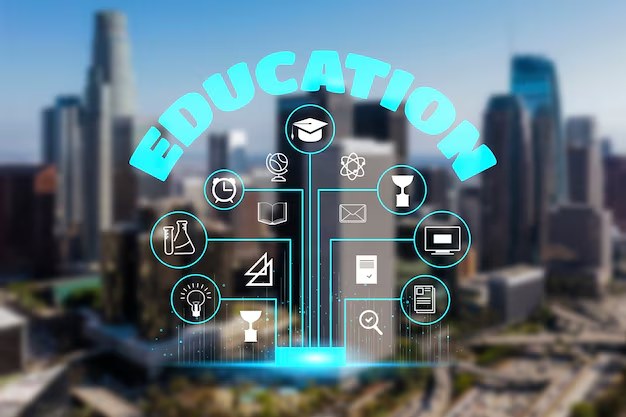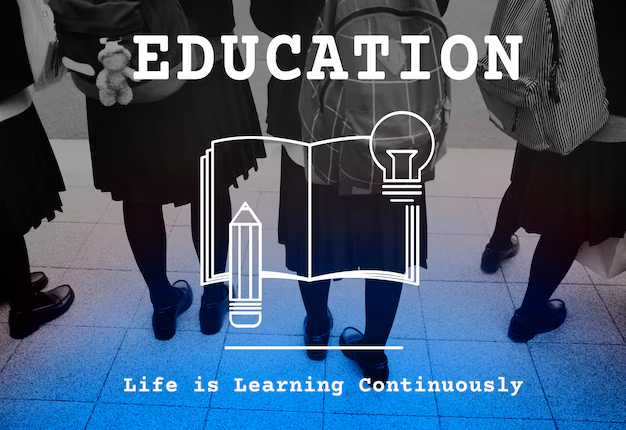Higher education is undergoing a profound transformation in response to the evolving demands of a rapidly changing world. In the past few decades, the landscape of academia has been reshaped by a host of factors such as technological advancements, globalization, demographic shifts, and societal changes. As we look ahead to the future, it is clear that the road to success for higher education institutions (HEIs) will not be without its challenges. However, with the right mindset and strategic planning, these challenges can also present valuable opportunities for growth, innovation, and inclusivity.
In this article, we will explore the challenges that higher education faces in the coming years, as well as the opportunities that lie ahead. We will discuss how technological advancements, globalization, shifting workforce needs, and the increasing focus on diversity and inclusion are all contributing to an evolving higher education ecosystem. Moreover, we will look at how institutions can adapt to these changes, innovate in their approaches, and prepare students for the demands of the future.
Key Takeaways
- Technology, globalization, and workforce changes are driving the transformation of higher education.
- Challenges such as affordability, accessibility, and the digital divide must be addressed to ensure equitable access to education.
- Opportunities for growth exist in areas like lifelong learning, interdisciplinary collaboration, and international partnerships.
- Institutions must balance tradition with innovation to provide relevant, high-quality education that prepares students for the future.
- Higher education has the potential to shape a more inclusive, dynamic, and globally connected world by embracing these changes.
The Current State of Higher Education: A Time of Transition

The landscape of higher education is being significantly reshaped by a confluence of forces. Technology, globalization, and changing economic realities are all influencing how institutions operate, how students learn, and how the workforce is evolving. These forces are driving change not just in the way that education is delivered, but also in how it is perceived, accessed, and valued by students and society alike.
Technology and Digital Transformation
One of the most profound changes in recent years has been the integration of technology into higher education. From online learning platforms to digital libraries and interactive tools, technology is transforming the way students access information and engage with their studies. The COVID-19 pandemic accelerated the adoption of digital learning and remote education, and even as the world returns to in-person classes, the demand for hybrid learning models remains high.
Online education is no longer seen as a secondary or alternative option but is increasingly viewed as an integral component of higher education. Institutions are embracing this change by incorporating online programs, virtual classrooms, and digital assessment tools that facilitate a more flexible, accessible, and personalized learning experience for students. However, as the reliance on digital platforms increases, universities and colleges must also grapple with issues such as data privacy, cybersecurity, and the digital divide.
Globalization of Education
Another major factor that is shaping the future of higher education is globalization. The interconnectedness of the world’s economies, societies, and cultures has led to a more diverse student body, an increase in international collaborations, and a broader scope of research and development. Universities are now facing pressure to become global players, not just in terms of student recruitment but also in their research output, partnerships with international institutions, and the ability to offer education that is relevant to students in a global context.
For students, the ability to study abroad and gain international experiences has become an essential part of their educational journey. These experiences not only broaden their cultural understanding but also enhance their employability in a globalized workforce. However, globalization also brings about challenges such as the competition for international talent, the need to address issues of equity in access to education, and the growing pressure to offer programs that cater to a diverse range of students with different cultural, social, and academic backgrounds.
The Changing Nature of the Workforce
The demands of the workforce are also undergoing a dramatic transformation. The rapid pace of technological advancements and automation has led to the emergence of new industries and job roles, while simultaneously making certain skills and occupations obsolete. As a result, higher education institutions must adapt their curricula to provide students with the skills and competencies that will be required in the future economy. This includes a greater emphasis on digital literacy, critical thinking, problem-solving, and the ability to work collaboratively in diverse environments.
Moreover, employers are increasingly looking for graduates who possess not only technical knowledge but also soft skills such as communication, creativity, and emotional intelligence. Higher education institutions will need to balance the teaching of specialized knowledge with the cultivation of broader, transferable skills that equip students for the challenges of an ever-changing labor market.
The Push for Greater Inclusivity and Diversity
There is an increasing demand for higher education to be more inclusive and diverse. Institutions are under pressure to not only provide access to students from a wide range of socioeconomic backgrounds but also to create environments that are welcoming and supportive for people from various racial, ethnic, and gender backgrounds. There is growing recognition that diversity and inclusivity are critical to the academic, social, and personal development of students, as well as to the overall success of higher education institutions.
Universities and colleges must work to remove barriers to access, whether they are financial, social, or cultural, and ensure that students from all backgrounds are given the support and resources they need to succeed. Additionally, institutions must foster inclusive environments where diversity is celebrated, and students have the opportunity to engage in open dialogue and learn from perspectives different from their own.
Navigating the Challenges of the Future

While the future of higher education holds great promise, it is also fraught with challenges. The forces of technological disruption, economic pressures, and demographic changes are reshaping the landscape, and institutions must be proactive in addressing these challenges.
Addressing Affordability and Accessibility
The rising cost of higher education remains one of the most pressing issues facing students and institutions. In many parts of the world, the cost of tuition, combined with student debt, has made higher education increasingly inaccessible for many students. Institutions must explore new ways to make education more affordable, such as offering more scholarships, developing alternative models for financing education, and expanding access to low-cost online learning options.
At the same time, the quality of education must not be compromised in the pursuit of affordability. Ensuring that all students, regardless of their financial background, have access to a high-quality education will require collaboration between governments, institutions, and private sector partners.
Bridging the Digital Divide
While technology holds immense potential to improve access to education, it also presents a challenge in terms of the digital divide. Not all students have equal access to the necessary technology or internet connectivity to participate in online learning. Institutions will need to ensure that digital platforms are accessible to all students and that those who lack the resources to access online learning are not left behind.
Moreover, as digital tools and artificial intelligence (AI) become more integrated into the learning process, institutions must provide students and faculty with the necessary training to use these tools effectively. This will require investment in professional development and a focus on building digital literacy at all levels of education.
Balancing Tradition with Innovation
Higher education institutions must strike a balance between tradition and innovation. While it is important to preserve the values of academic rigor, critical thinking, and face-to-face interaction, it is equally important to embrace new ways of teaching and learning. This means adopting hybrid learning models, incorporating experiential learning opportunities, and rethinking how courses and programs are structured to meet the needs of today’s students.
Institutions will need to foster a culture of innovation, encouraging faculty and staff to explore new pedagogical methods, technologies, and partnerships. This may involve rethinking the role of universities in society and their relationship with industry, research, and government.
Preparing for an Evolving Workforce
To meet the needs of the rapidly changing workforce, higher education institutions must ensure that their curricula are flexible and responsive. This will require a closer alignment between academia and industry, with an emphasis on skills development, internships, and apprenticeships that allow students to gain real-world experience while still in school.
Additionally, institutions must help students develop the soft skills needed to succeed in the workplace, such as communication, teamwork, and adaptability. These skills are increasingly important as the nature of work becomes more collaborative, digital, and dynamic.
Opportunities for Growth and Innovation

Despite the challenges, the future of higher education presents a wealth of opportunities for growth and innovation. Institutions that are willing to embrace change, experiment with new approaches, and adapt to the needs of students and the workforce will position themselves for success.
Embracing Lifelong Learning
The concept of lifelong learning is gaining traction as individuals seek to continuously update their skills throughout their careers. Higher education institutions can play a central role in this by offering flexible learning opportunities for non-traditional students, professionals, and lifelong learners. Online courses, micro-credentials, and certificate programs can allow students to build specialized skills without committing to a traditional degree program.
Institutions that embrace lifelong learning will not only provide more opportunities for individuals to advance their careers but also help meet the needs of industries that require a continually upskilled workforce.
Expanding International Collaborations
Globalization presents a tremendous opportunity for higher education institutions to expand their international reach and impact. By forming partnerships with universities and research institutions around the world, colleges can create opportunities for cross-cultural exchanges, joint research projects, and global learning experiences for students. This will not only broaden students’ horizons but also help institutions build a global reputation.
Increased international collaborations can also help address some of the challenges related to student recruitment, funding, and the sharing of resources.
Promoting Interdisciplinary Learning
As the challenges facing society become more complex, there is growing recognition of the need for interdisciplinary approaches to problem-solving. Higher education institutions have an opportunity to break down traditional academic silos and promote interdisciplinary learning. By encouraging students to explore topics and fields outside their primary area of study, institutions can foster creativity, critical thinking, and the ability to solve complex global challenges.
Navigating the Future of Higher Education: Challenges and Opportunities
Declining Public Trust & Outcomes-Focused Education
One of the most critical issues is the erosion of public trust in higher education. Today, many institutions that once served as engines of social mobility are perceived as perpetuating inequality. The key to regaining this trust lies in reframing the value proposition of a college degree. As Deloitte highlights, public skepticism has grown, with only 36% of Americans expressing confidence in higher education. The solution lies in outcome-oriented metrics that resonate with students and their families, such as employment outcomes, student debt levels, and return on investment (ROI).
Having worked across both education and business sectors, I, too, have witnessed the same degradation of trust in higher education and, more specifically, the return on investment in continuing education and vocational training. In a time of unprecedented competition from alternative learning platforms and career pathways, students and families are increasingly scrutinizing whether traditional education aligns with their goals and financial constraints.
Institutions must align their offerings with workforce needs to ensure graduates have the skills to succeed in today’s labor market. This includes developing alternative credential programs, expanding continuing education, and offering flexible online degrees. From my own experience in advancing operational efficiency and mission-driven leadership, I’ve seen how a data-driven approach to student outcomes can significantly bolster an institution’s value in the eyes of prospective students and donors.
Leadership Crisis in Higher Education
The role of college presidents has never been more complex. Deloitte’s report shows that leadership in higher education is facing a talent crisis, with 55% of presidents planning to step down in the next five years. The pressure to manage financial challenges, address political polarization, and deliver strong student outcomes has left many leaders considering early exits.
From my perspective, effective leadership in higher education requires not only strategic vision but also the ability to foster collaboration across diverse stakeholder groups—students, faculty, donors, and legislators. Institutions must invest in leadership development and succession planning to ensure a pipeline of capable leaders prepared to navigate this complex landscape. Boards and search committees must also expand their search for leaders with diverse experiences outside of academia to bring fresh perspectives.
The Disruption of AI
Generative AI presents both opportunities and risks for higher education. The integration of AI into curricula and operations will reshape how colleges teach, operate, and support students. Yet, as Deloitte highlights, only 20% of institutions feel prepared for this change.
AI’s potential to personalize learning, streamline administrative processes, and create adaptive curricula offers immense promise. However, it requires robust governance and a focus on ethics to avoid deepening inequality or compromising educational quality. Having managed technology-driven transformations, I recognize that embracing AI must be paired with human-centered strategies—building skills in critical thinking, creativity, and ethical decision-making to ensure that AI enhances rather than replaces the educational experience.
Public-Private Partnerships (P3s) at the Core of Academic Innovation
Public-private partnerships (P3s) are no longer limited to non-academic sectors like campus services but are becoming integral to academic offerings and institutional innovation. Deloitte highlights that 74% of institutions view P3s as bringing unique competencies that in-house resources cannot replicate. In my experience, these partnerships can drive cost savings, foster innovation, and provide students with enhanced learning opportunities, especially in areas like digital transformation and sustainability.
However, managing these relationships carefully is essential to avoid reputational risks and ensure the quality of education. Institutions should conduct thorough risk assessments and maintain strong oversight to ensure these partnerships align with their mission and values.
A Call to Action
The future of higher education is undeniably challenging, but it also presents a tremendous opportunity for reinvention. Colleges and universities must rethink traditional models, embrace technology, and focus on delivering outcomes that meet the evolving needs of students and employers. As leaders, we must be proactive in shaping this new era—ensuring that higher education remains a catalyst for social mobility and a cornerstone of societal progress.
By prioritizing operational excellence, fostering strong leadership, and embracing innovation, we can navigate these changes and create a more sustainable and equitable future for higher education.
#HigherEducation #Leadership #AI #OperationalExcellence #PublicPrivatePartnerships #Innovation #FutureOfEducation
Challenge 1: Equity, Diversity, and Inclusion (EDI)
With a growing focus on social justice and inclusion, institutions must address issues of EDI in their programs, policies, and practices. The EDI challenge refers to the need for institutions to address systemic barriers and promote equity, diversity, and inclusion within their programs, policies, and practices. This challenge is particularly important because post-secondary education is a critical avenue for social mobility.
Strategic Initiative: Institutions should develop and implement EDI policies and practices at all levels of the institution. Training and support in EDI issues and practices for faculty and staff should be provided. Institutions should recruit and retain a diverse learner body, faculty, and staff.
Challenge 2: Demographic Changes
The demographic profile of learners is changing rapidly, with a decline in the number of traditional-aged learners and an increase in the number of adult learners, international learners, and underrepresented groups. This poses a challenge for institutions that have traditionally catered to a narrow demographic.
Strategic Initiative: Institutions should invest in outreach programs and recruitment efforts that target these new and diverse learner populations. This could include developing tailored marketing campaigns, creating flexible learning options, and partnering with community organizations to reach underrepresented groups.
Challenge 3: Technological Disruption
Advancements in technology are disrupting traditional models of education, from online learning to the use of artificial intelligence and machine learning in the classroom. While these innovations offer exciting new opportunities, they also pose a challenge for institutions that must adapt to new modes of teaching and learning.
Strategic Initiative: Institutions should invest in professional development for faculty and staff to ensure they are equipped to use technology effectively in the classroom. This could include offering workshops, online courses, and other training opportunities. Institutions should also invest in infrastructure and support services that enable the use of new technologies.
Also Read : Navigating Higher Education Careers: Opportunities Challenges And Future Trends
Conclusion
The future of higher education is filled with both challenges and opportunities. As technology, globalization, and societal changes continue to shape the landscape, institutions must adapt and innovate to meet the evolving needs of students and the workforce. By embracing digital transformation, fostering inclusivity, and preparing students for the demands of the future, higher education can continue to play a crucial role in shaping a better, more equitable world.
FAQs
What are the biggest challenges facing higher education today?
The biggest challenges include rising costs and accessibility, the digital divide, balancing tradition with innovation, and preparing students for a rapidly evolving workforce.
How is technology changing higher education?
Technology is revolutionizing education through online learning platforms, digital classrooms, and AI tools that personalize learning experiences. It also helps institutions reach a broader audience.
What is the role of globalization in higher education?
Globalization has expanded opportunities for international collaborations, study abroad programs, and cross-cultural exchanges. It also creates a more diverse student body.
How can higher education become more affordable?
Higher education can become more affordable through increased access to scholarships, alternative financing models, and the expansion of low-cost online programs.
What skills will be important for future graduates?
In addition to technical knowledge, future graduates will need strong soft skills such as communication, teamwork, creativity, and adaptability to succeed in a dynamic job market.
How can universities address the digital divide in education?
Universities can address the digital divide by ensuring equal access to technology, providing digital literacy training, and offering financial support for students who lack the necessary resources.
What is lifelong learning and why is it important?
Lifelong learning refers to the continuous pursuit of knowledge and skills throughout a person’s life. It is important as it enables individuals to stay relevant in their careers and adapt to changing job requirements.




